Kerameikos is the site of an ancient cemetery that was discovered in the early twentieth century by German archaeologists. The cemetery was situated near the defensive walls that surrounded the city. The two most important gates of ancient Athens, the Dipylon and the Sacred Gate, stood here.
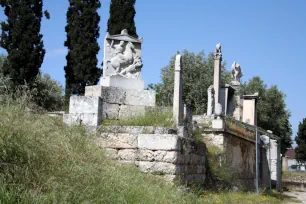
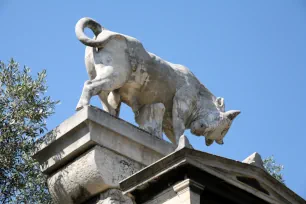
Kerameikos is named after Keramos – the mortal son of the god Dionysus and Ariadne – who was a protector of the potters. Many of these potters lived in this area near the city walls.
The Ancient Cemetery
The ancient cemetery of Athens, where people were buried as early as in the twelfth century BC, was located just outside the city walls.
Many eminent citizens were buried along the road that led to Plato’s Academy. The road was lined with magnificent tombs decorated with kioniskoi (marble columns), statues and funerary stelae with beautiful relief sculptures. The original monuments are now in the National Archaeological Museum and the Kerameikos Museum and were replaced by replicas.
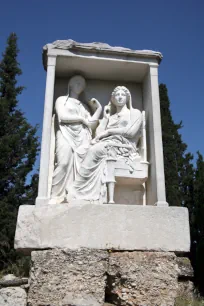
The most famous monument is probably the tomb of a treasurer, with a statue of a bull, symbol of the god Dionysus. Nearby is the tomb of Lysimachides, with a statue of a large dog.
One of several interesting stelae at the ancient cemetery is the grave stele of Dexileos, which shows a young man on horseback who died in 394 BC. Stelae often showed the deceased in company with beloved relatives and friends. One such monument is the Stele of Demetria and Pamphile, on which Pamphile is depicted with her sister.
Kerameikos Museum
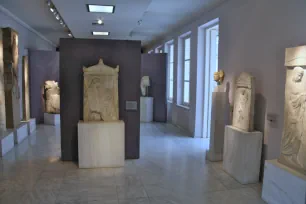
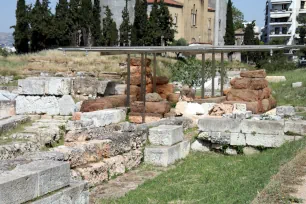
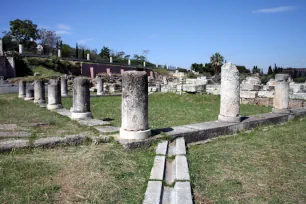
Near the entrance to the Kerameikos is a small museum, where many of the monuments that were discovered during the excavation of the cemetery can be seen, including the bull statue and many stelae. Also on display are a number of large funerary vases, sculptures that decorated the Sacred Gate and a number of painted ceramics, some even with explicit erotic scenes.
The City Gates
Construction of the Athenian City Wall started in 478 BC and protected not only the city of Athens, but also a long corridor towards the harbor as well as the harbor itself.
Two large gates were built here at Kerameikos. The largest gate was the Dipylon, the starting point of the Panathenaic Way to the Acropolis. It was the largest gate in the ancient world and consisted of a corridor with four large towers at each corner, intended to trap intruding forces. Nearby was another gate, the Hiera Pyle (Sacred Gate), named as such for the Sacred road that ran through the gate to Eleusis, the site of a sanctuary of the goddess Demeter.
Between the two gates was the Pompeion, a large structure that was erected in 400 BC. It was built around a colonnaded courtyard and measured 70 meters by 30 meters (230 x 98 ft.). In this building, preparations for large festivals such as the Panathenaia festival – the most important festival in ancient Athens – were carried out. Today, only ruins remain, but the foundations of the city gates and the Pompeion are still clearly visible.

